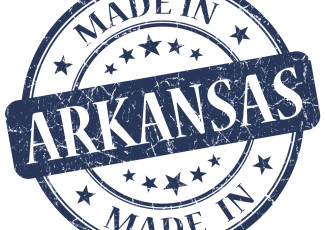Raising Money to Support Workforce Needs
By Rebecca L. Weber
May 15, 2015
Our Louisiana 2020 goal leads the state’s Community and Technical College System to use funding to support local industry.
Louisiana’s economic boom means that the state has unprecedented job opportunities — but not enough college-educated employees to meet the current demand. Eighty-four percent of high-demand jobs in 2016 will require a college degree or industry-based credential.
Community colleges and employers alike are working together on “Our Louisiana 2020,” an ambitious plan to meet the state’s workforce challenges over the next five years, with goals such as doubling the number of graduates to 40,000 annually, doubling the earnings of an annual graduating class to $1.5 billion and doubling foundation assets to $50 million.
In the past year and half, community and technical colleges have raised more than $40 million from private matches from industry partners.
Monty Sullivan, president of Louisiana’s Community and Technical College System, explains what the college has done to maximize public–private cooperation.
Clarifying what needs to be done
“We talked to 250 business leaders from around the state, and we asked a very simple question: What is it that Louisiana, its business community and its people, need from its community and technical colleges? Not a question of what is it that you can do for our colleges, but what is it that the colleges need to be doing. Every single person said to us: workforce, workforce, workforce.
“We tend to walk in and want to sell a package of goods that is prepackaged. We have not been very good listeners traditionally, and this is a classic time for us to begin to answer the workforce challenge and be good listeners, and follow through.”
Prioritizing when demand exceeds supply
“We’ve been able to take every occupation in Louisiana, and along with our workforce commission partners, drill down and create a star rating system that identifies those occupations that are in greatest demand and [pay the] highest wage. So those jobs that are rated as star four, star five, that’s where we’re investing.
“Our efforts are very much targeted on [the] construction sector. To give an example, we had about 2,400 completers two years ago, in the construction field. In this past year, that number moved to over 4,800. The occupational demand for the folks in these fields is nearing 10,000 annually. So we have doubled in the last year, but we have the need to double yet again.”
Creating a skilled local workforce
“The biggest challenge is to make sure that the people in Louisiana are skilled and capable of taking advantage of those economic opportunities. We want the license plates in the parking lot to read Louisiana — not Texas, Oklahoma, Arkansas and Mississippi.
“The long-term impact of this should be that the people of Louisiana have documented credentials, so that after this hundred billion dollars’ worth of construction is complete, they have the ability to make a living in this field.”
Big money, big vision
“The $40 million that we’ve raised has been an endorsement on our work in a way that has energized our employees. The people at our colleges have realized that industry is willing to endorse the work that they do by writing a check. I can’t overemphasize how important that is to the mindset of the people at our colleges.
“It’s not about the college’s needs, it’s about the company’s workforce needs. Make the ask based on the width or the scope of the company’s workforce demands. Our mindset in the past has been to look at a donor and to look at what their giving capacity is. That’s not what we’re describing here at all. It’s, instead, what are the needs of the organization that we’re trying to serve.
“The extraordinary demand environment allows us to be able to raise money today. We will not always be here. Now is the time for us to raise those dollars in the way that’s going to have long-term, lasting implications for our colleges.”








